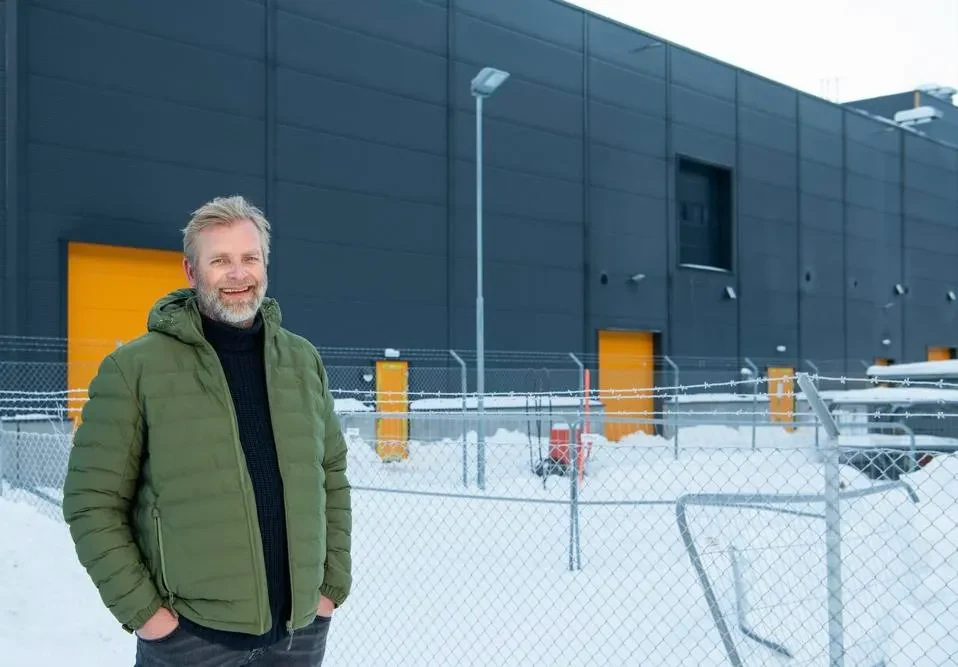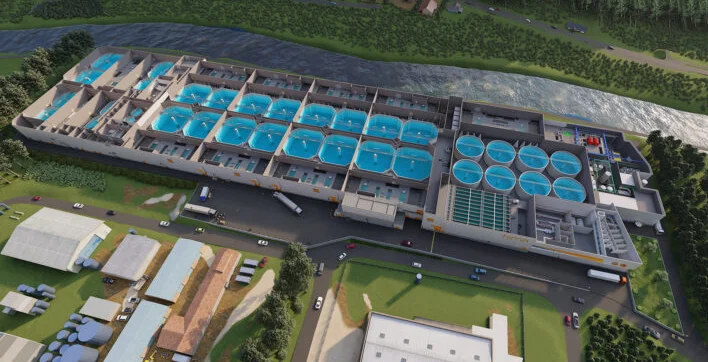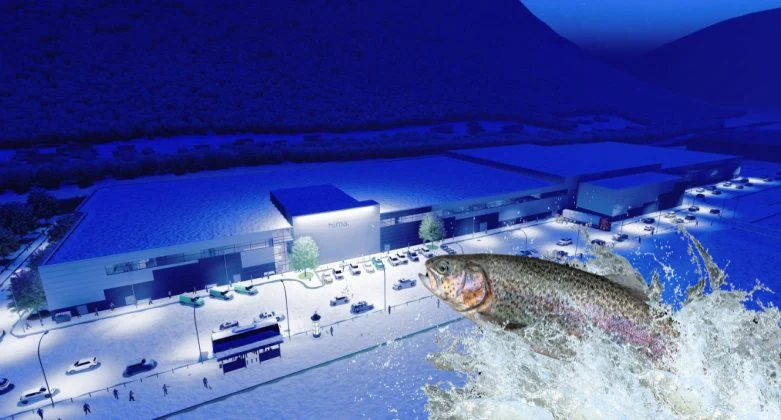In Norway, an exciting new chapter in sustainable aquaculture is unfolding. Hima Seafood, a forward-thinking Norwegian company, has launched a pioneering project: a sprawling 30,000-square-meter land-based trout farm. This facility, nestled in the scenic locale of Rjukan, Telemark, is unique for its reliance on pristine groundwater and stands out for not raising salmon, but trout.
On January 5, a landmark moment occurred as Hima Seafood welcomed a substantial delivery of 420,000 trout roe grains, a significant step in establishing what’s set to be the world’s largest land-based trout farm. The roe, a vital foundation for the project, originates from Osland Stamfisk’s Osland stock in Høyanger, Sognefjord, renowned for its age and quality. “This monumental day will be forever marked in the history of aquaculture, as Hima Rjukan has now achieved the first of many milestones in producing sustainable seafood,” the company stated.
Rjukan was chosen for its premium fresh water, essential for the flavor of the final product, its proximity to markets, and access to both expert knowledge and eco-friendly energy sources. The facility promises a revolution in aquaculture, utilizing a modern freshwater recycling aquaculture system (RAS) capable of purifying the water as it circulates through the fish farm. This state-of-the-art approach not only enhances fish welfare but also minimizes environmental impact.
The project, a significant investment of about $250 million (NOK 2.5 billion), backed by sustainability firm Foresight and additional personal funds, is a testament to the growing importance of responsible food production methods. “The investment went to develop a new sustainable way of food production, protecting the environment and animals. Land-based fish farming with recirculated groundwater is an environmentally friendly way of farming,” said Sten Falkum, CEO of Hima Seafood.

The facility is expected to be a game-changer in the industry, capable of producing an impressive 8,000 tons of premium trout annually. This volume of production not only meets the growing demand for sustainable seafood but also positions Hima Seafood as a leader in the field.
In contrast to the traditional focus on salmon, which has dominated Norway’s aquaculture industry, Hima Seafood is exploring the potential of trout. This shift comes at a time when the Norwegian salmon farming industry, predominantly based on aquaculture, faces scrutiny over animal welfare standards and environmental concerns. Issues such as poor animal welfare practices, leading to high mortality rates, and the pollution of ocean waters, threatening local biodiversity, have raised questions about the sustainability of current aquaculture methods.
Hima Seafood’s approach, focusing on fish welfare and environmental protection, sidesteps many of these issues. Their farm system, built on clean water, disease prevention, and reduced stress factors, promises a healthier and more sustainable method of fish farming. “With our system, there is nothing we need to vaccinate against,” Falkum highlighted, underscoring the health benefits of their recirculated water system. The farm’s technology also facilitates stress-free transportation of the trout within the facility. “We gently move them so they don’t feel stressed,” Falkum added, emphasizing the humane aspects of their production process.

A notable aspect of Hima Seafood’s operation is its focus on producing organic fertilizers from the farm’s by-products. By avoiding antibiotics and saltwater, the farm plans to collect bacteria and biomaterials, like feed residues and excrement, to transform them into organic fertilizers. “This is a fish and fertilizer company,” Falkum stated, illustrating the circular nature of their operations.
The first batch of trout, expected to mature in 14 to 16 months, will be primarily marketed to restaurants, hotels, and retailers across selected European markets. Hima Seafood aims to provide a consistent supply of premium trout, addressing the fluctuating production issues faced by sea-based farms.
“We will produce a predictable volume every day. At sea, you cannot do that when all the fish is grown at the same time,” Falkum noted, highlighting the controlled environment of their land-based facility.
More To Discover
- The UK Has A Biomass Problem: Sustainability Questions Threaten Green Energy Goals In Biomass Industry
- Crypto Mining’s Huge Energy Bite: 2% of US Power With No Local Benefits
- The 10 Most Fascinating New Species Discovered in 2023 (Out Of 815)
- America’s Coastline Horrifically Redrawn by Rising Seas In 100 Years
Furthermore, Hima Seafood’s vision extends beyond the Norwegian market. The success of the Rjukan facility could serve as a blueprint for establishing similar farms globally, promoting self-sustaining red fish production and organic fertilizer manufacturing in various countries. Plans are already underway for a plant in North Carolina, with more U.S. locations in consideration.
In summary, Hima Seafood’s venture into land-based trout farming represents a significant step towards more sustainable and responsible aquaculture. By focusing on environmental protection, animal welfare, and innovative technology, the company sets a new standard in the industry, potentially influencing global practices in seafood production.




















